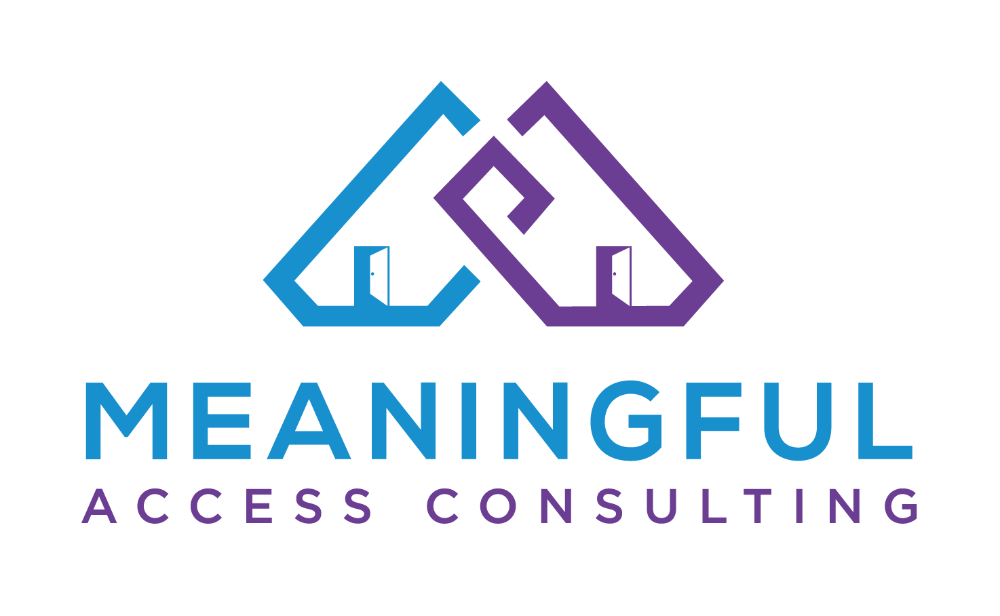2.7.3: Enhancing Dexterity and Flexibility in the Workplace
When we think about workplace accessibility, features like ramps and automatic doors often come to mind first. However, for many employees with dexterity and flexibility disabilities, smaller-scale accommodations can make a world of difference. This tool will help employers assess and optimize their workplaces to be more inclusive for people with a wide range of physical abilities.
Understanding Dexterity and Flexibility Disabilities
Dexterity and flexibility disabilities encompass a broad spectrum of conditions that affect a person’s ability to perform manual tasks and maintain specific postures. Like some physical disabilities we described in the Accessibility Checklist for Employers, several factors might impact an employee’s flexibility and range of motion.Some common examples include:
- Arthritis and other joint disorders that cause pain and limit range of motion.
- Carpal tunnel syndrome and repetitive strain injuries that impact hand and wrist function.
- Muscular dystrophy, multiple sclerosis, and other neuromuscular conditions that progressively weaken muscles.
- Cerebral palsy and other movement disorders that affect fine motor skills and coordination.
While the specific challenges vary by individual, many people with dexterity and flexibility disabilities face barriers with gripping, manipulating small objects, reaching, lifting, and sustaining uncomfortable positions.
Assessing Manual Tasks and Workstations
To identify areas for improvement, closely examine the manual tasks and workstations in your workplace. Consider:- Grip strength required: Do employees need to grasp tools, controls, or handles tightly? Are there alternatives that require less force?
- Wrist and arm movement: How much bending, twisting, and extending do everyday tasks involve? Are there ergonomic solutions to keep wrists neutral?
- Fine finger dexterity: Are employees manipulating small parts, pressing tiny buttons, or using a standard keyboard and mouse? Would voice controls or adapted input devices help?
- Reaching and lifting: Do shelves, supplies, and equipment require overhead reaching or heavy lifting? Can frequently used items be moved to accessible heights?
- Postural demands: Do workstations allow for proper ergonomic positioning and alternating between sitting and standing? Are supportive chairs and adjustable desks available?
Analyzing tasks through this lens allows you to pinpoint opportunities to implement more flexible and accessible solutions.
Ergonomic and Adaptive Equipment Ideas
There are countless ergonomic products and adaptive aids on the market to support employees with dexterity and flexibility disabilities. Some examples include:- Ergonomic keyboards and mice, like split designs, larger keys, and vertical orientations to reduce strain.
- Speech recognition programs and eye-tracking software that enable hands-free computer use.
- Grip aids, like rubber sleeves, auto-squeeze scissors, and easy-turn door levers to assist with grasping.
- Electric staplers, pencil sharpeners, and other automated office tools that minimize physical effort.
- Adjustable desks and footrests to accommodate different heights and promote proper posture.
- Forearm supports and copyholders to reduce reaching and neck strain.
- Specialized seating with lumbar support, adjustable armrests, and seat tilt to maximize comfort.
That said, one of the best things you can do is work with your employees to find the right equipment and accommodations for their needs. Occupational therapists, like those through the Neil Squire Society, can also provide expert guidance on appropriate solutions, ergonomics assessments and even work site accommodations recommendations1.
Flexible Scheduling and Remote Work
In addition to physical accommodations, flexible work arrangements can be game changers for employees with dexterity and flexibility disabilities. Options like remote work, flexible start/end times, and generous break policies allow people to:- Work when they feel most physically capable and take rest as needed.
- Avoid long commutes that exacerbate pain and fatigue.
- Schedule work around medical appointments and therapies.
- Use their own customized equipment and furniture at home.
Many organizations discovered the benefits of telework and flexible schedules during the pandemic. Consider making those options permanent to support employees with disabilities if that employee’s work environment or duties allow for that kind of flexibility.
Task and Workflow Modifications
Finally, explore ways to modify standard processes to minimize dexterity and flexibility barriers. For example:- Use binder clips and folders instead of tight-clasping three-ring binders.
- Provide wide diameter, felt tip pens and markers in place of ballpoints.
- Allow digital signatures and stamps rather than hand-signing documents.
- Ensure ample clearance around desks and tables for mobility devices to fit.
- Break large tasks into smaller steps that are easier to physically manage.
The key is to get creative and focus on the end goal, not a rigid “way things have always been done.” Engage employees with disabilities to understand their challenges and brainstorm potential solutions together.
Realizing Everyone’s Potential
Ultimately, dexterity and flexibility accommodations are about enabling people to do their best work. Providing the right tools, environment, and flexibility allows employees to focus their energy on tasks and not battle barriers.An employee with arthritis may have deep expertise to share if they can access resources without pain. A colleague with cerebral palsy may be your most innovative thinker if they have the assistive tech to communicate their ideas. When you minimize physical strain, you maximize human potential.
Accommodations aren’t special treatment—they are tools to level the playing field so everyone can contribute fully. Whether you are just starting to understand, identify, or enhance your knowledge around physical disabilities, by following the strategies in this toolkit, you’ll create a workplace where employees with wide-ranging physical abilities can thrive. That’s the foundation of a truly inclusive culture.
Disclaimer:
Hire for Talent has made every effort to use the most respectful words possible while writing these materials. We realize, however, that the most appropriate terminology may change over time. We developed these materials with the intent to respect the dignity and inherent rights of all individual.
Hire for Talent has made every effort to use the most respectful words possible while writing these materials. We realize, however, that the most appropriate terminology may change over time. We developed these materials with the intent to respect the dignity and inherent rights of all individual.
This tool was developed in collaboration with




